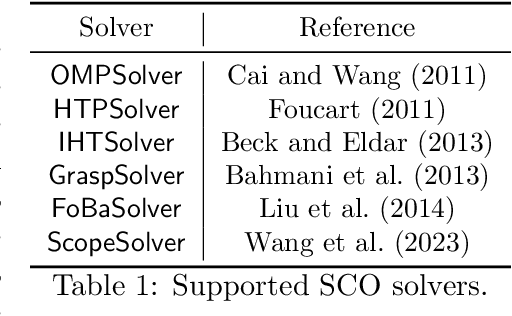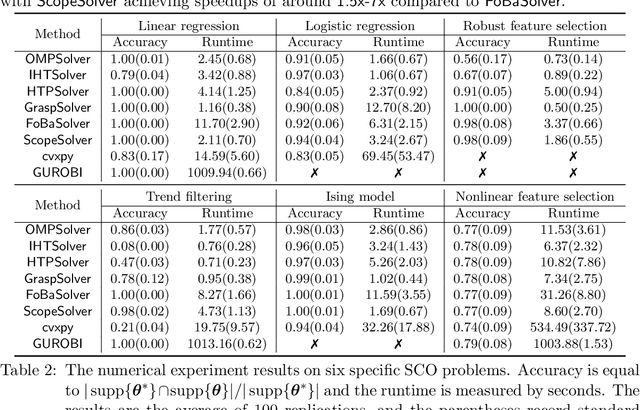Jin Zhu
University of Cambridge
MiniMax-M1: Scaling Test-Time Compute Efficiently with Lightning Attention
Jun 16, 2025Abstract:We introduce MiniMax-M1, the world's first open-weight, large-scale hybrid-attention reasoning model. MiniMax-M1 is powered by a hybrid Mixture-of-Experts (MoE) architecture combined with a lightning attention mechanism. The model is developed based on our previous MiniMax-Text-01 model, which contains a total of 456 billion parameters with 45.9 billion parameters activated per token. The M1 model natively supports a context length of 1 million tokens, 8x the context size of DeepSeek R1. Furthermore, the lightning attention mechanism in MiniMax-M1 enables efficient scaling of test-time compute. These properties make M1 particularly suitable for complex tasks that require processing long inputs and thinking extensively. MiniMax-M1 is trained using large-scale reinforcement learning (RL) on diverse problems including sandbox-based, real-world software engineering environments. In addition to M1's inherent efficiency advantage for RL training, we propose CISPO, a novel RL algorithm to further enhance RL efficiency. CISPO clips importance sampling weights rather than token updates, outperforming other competitive RL variants. Combining hybrid-attention and CISPO enables MiniMax-M1's full RL training on 512 H800 GPUs to complete in only three weeks, with a rental cost of just $534,700. We release two versions of MiniMax-M1 models with 40K and 80K thinking budgets respectively, where the 40K model represents an intermediate phase of the 80K training. Experiments on standard benchmarks show that our models are comparable or superior to strong open-weight models such as the original DeepSeek-R1 and Qwen3-235B, with particular strengths in complex software engineering, tool utilization, and long-context tasks. We publicly release MiniMax-M1 at https://github.com/MiniMax-AI/MiniMax-M1.
Demystifying the Paradox of Importance Sampling with an Estimated History-Dependent Behavior Policy in Off-Policy Evaluation
May 28, 2025Abstract:This paper studies off-policy evaluation (OPE) in reinforcement learning with a focus on behavior policy estimation for importance sampling. Prior work has shown empirically that estimating a history-dependent behavior policy can lead to lower mean squared error (MSE) even when the true behavior policy is Markovian. However, the question of why the use of history should lower MSE remains open. In this paper, we theoretically demystify this paradox by deriving a bias-variance decomposition of the MSE of ordinary importance sampling (IS) estimators, demonstrating that history-dependent behavior policy estimation decreases their asymptotic variances while increasing their finite-sample biases. Additionally, as the estimated behavior policy conditions on a longer history, we show a consistent decrease in variance. We extend these findings to a range of other OPE estimators, including the sequential IS estimator, the doubly robust estimator and the marginalized IS estimator, with the behavior policy estimated either parametrically or non-parametrically.
Semi-pessimistic Reinforcement Learning
May 25, 2025Abstract:Offline reinforcement learning (RL) aims to learn an optimal policy from pre-collected data. However, it faces challenges of distributional shift, where the learned policy may encounter unseen scenarios not covered in the offline data. Additionally, numerous applications suffer from a scarcity of labeled reward data. Relying on labeled data alone often leads to a narrow state-action distribution, further amplifying the distributional shift, and resulting in suboptimal policy learning. To address these issues, we first recognize that the volume of unlabeled data is typically substantially larger than that of labeled data. We then propose a semi-pessimistic RL method to effectively leverage abundant unlabeled data. Our approach offers several advantages. It considerably simplifies the learning process, as it seeks a lower bound of the reward function, rather than that of the Q-function or state transition function. It is highly flexible, and can be integrated with a range of model-free and model-based RL algorithms. It enjoys the guaranteed improvement when utilizing vast unlabeled data, but requires much less restrictive conditions. We compare our method with a number of alternative solutions, both analytically and numerically, and demonstrate its clear competitiveness. We further illustrate with an application to adaptive deep brain stimulation for Parkinson's disease.
MiniMax-01: Scaling Foundation Models with Lightning Attention
Jan 14, 2025Abstract:We introduce MiniMax-01 series, including MiniMax-Text-01 and MiniMax-VL-01, which are comparable to top-tier models while offering superior capabilities in processing longer contexts. The core lies in lightning attention and its efficient scaling. To maximize computational capacity, we integrate it with Mixture of Experts (MoE), creating a model with 32 experts and 456 billion total parameters, of which 45.9 billion are activated for each token. We develop an optimized parallel strategy and highly efficient computation-communication overlap techniques for MoE and lightning attention. This approach enables us to conduct efficient training and inference on models with hundreds of billions of parameters across contexts spanning millions of tokens. The context window of MiniMax-Text-01 can reach up to 1 million tokens during training and extrapolate to 4 million tokens during inference at an affordable cost. Our vision-language model, MiniMax-VL-01 is built through continued training with 512 billion vision-language tokens. Experiments on both standard and in-house benchmarks show that our models match the performance of state-of-the-art models like GPT-4o and Claude-3.5-Sonnet while offering 20-32 times longer context window. We publicly release MiniMax-01 at https://github.com/MiniMax-AI.
Sparsity-Constraint Optimization via Splicing Iteration
Jun 17, 2024Abstract:Sparsity-constraint optimization has wide applicability in signal processing, statistics, and machine learning. Existing fast algorithms must burdensomely tune parameters, such as the step size or the implementation of precise stop criteria, which may be challenging to determine in practice. To address this issue, we develop an algorithm named Sparsity-Constraint Optimization via sPlicing itEration (SCOPE) to optimize nonlinear differential objective functions with strong convexity and smoothness in low dimensional subspaces. Algorithmically, the SCOPE algorithm converges effectively without tuning parameters. Theoretically, SCOPE has a linear convergence rate and converges to a solution that recovers the true support set when it correctly specifies the sparsity. We also develop parallel theoretical results without restricted-isometry-property-type conditions. We apply SCOPE's versatility and power to solve sparse quadratic optimization, learn sparse classifiers, and recover sparse Markov networks for binary variables. The numerical results on these specific tasks reveal that SCOPE perfectly identifies the true support set with a 10--1000 speedup over the standard exact solver, confirming SCOPE's algorithmic and theoretical merits. Our open-source Python package skscope based on C++ implementation is publicly available on GitHub, reaching a ten-fold speedup on the competing convex relaxation methods implemented by the cvxpy library.
skscope: Fast Sparsity-Constrained Optimization in Python
Mar 27, 2024

Abstract:Applying iterative solvers on sparsity-constrained optimization (SCO) requires tedious mathematical deduction and careful programming/debugging that hinders these solvers' broad impact. In the paper, the library skscope is introduced to overcome such an obstacle. With skscope, users can solve the SCO by just programming the objective function. The convenience of skscope is demonstrated through two examples in the paper, where sparse linear regression and trend filtering are addressed with just four lines of code. More importantly, skscope's efficient implementation allows state-of-the-art solvers to quickly attain the sparse solution regardless of the high dimensionality of parameter space. Numerical experiments reveal the available solvers in skscope can achieve up to 80x speedup on the competing relaxation solutions obtained via the benchmarked convex solver. skscope is published on the Python Package Index (PyPI) and Conda, and its source code is available at: https://github.com/abess-team/skscope.
Robust Offline Policy Evaluation and Optimization with Heavy-Tailed Rewards
Oct 28, 2023Abstract:This paper endeavors to augment the robustness of offline reinforcement learning (RL) in scenarios laden with heavy-tailed rewards, a prevalent circumstance in real-world applications. We propose two algorithmic frameworks, ROAM and ROOM, for robust off-policy evaluation (OPE) and offline policy optimization (OPO), respectively. Central to our frameworks is the strategic incorporation of the median-of-means method with offline RL, enabling straightforward uncertainty estimation for the value function estimator. This not only adheres to the principle of pessimism in OPO but also adeptly manages heavy-tailed rewards. Theoretical results and extensive experiments demonstrate that our two frameworks outperform existing methods on the logged dataset exhibits heavy-tailed reward distributions.
A Consistent and Scalable Algorithm for Best Subset Selection in Single Index Models
Sep 12, 2023Abstract:Analysis of high-dimensional data has led to increased interest in both single index models (SIMs) and best subset selection. SIMs provide an interpretable and flexible modeling framework for high-dimensional data, while best subset selection aims to find a sparse model from a large set of predictors. However, best subset selection in high-dimensional models is known to be computationally intractable. Existing methods tend to relax the selection, but do not yield the best subset solution. In this paper, we directly tackle the intractability by proposing the first provably scalable algorithm for best subset selection in high-dimensional SIMs. Our algorithmic solution enjoys the subset selection consistency and has the oracle property with a high probability. The algorithm comprises a generalized information criterion to determine the support size of the regression coefficients, eliminating the model selection tuning. Moreover, our method does not assume an error distribution or a specific link function and hence is flexible to apply. Extensive simulation results demonstrate that our method is not only computationally efficient but also able to exactly recover the best subset in various settings (e.g., linear regression, Poisson regression, heteroscedastic models).
Best-Subset Selection in Generalized Linear Models: A Fast and Consistent Algorithm via Splicing Technique
Aug 01, 2023Abstract:In high-dimensional generalized linear models, it is crucial to identify a sparse model that adequately accounts for response variation. Although the best subset section has been widely regarded as the Holy Grail of problems of this type, achieving either computational efficiency or statistical guarantees is challenging. In this article, we intend to surmount this obstacle by utilizing a fast algorithm to select the best subset with high certainty. We proposed and illustrated an algorithm for best subset recovery in regularity conditions. Under mild conditions, the computational complexity of our algorithm scales polynomially with sample size and dimension. In addition to demonstrating the statistical properties of our method, extensive numerical experiments reveal that it outperforms existing methods for variable selection and coefficient estimation. The runtime analysis shows that our implementation achieves approximately a fourfold speedup compared to popular variable selection toolkits like glmnet and ncvreg.
A residual dense vision transformer for medical image super-resolution with segmentation-based perceptual loss fine-tuning
Mar 03, 2023



Abstract:Super-resolution plays an essential role in medical imaging because it provides an alternative way to achieve high spatial resolutions and image quality with no extra acquisition costs. In the past few decades, the rapid development of deep neural networks has promoted super-resolution performance with novel network architectures, loss functions and evaluation metrics. Specifically, vision transformers dominate a broad range of computer vision tasks, but challenges still exist when applying them to low-level medical image processing tasks. This paper proposes an efficient vision transformer with residual dense connections and local feature fusion to achieve efficient single-image super-resolution (SISR) of medical modalities. Moreover, we implement a general-purpose perceptual loss with manual control for image quality improvements of desired aspects by incorporating prior knowledge of medical image segmentation. Compared with state-of-the-art methods on four public medical image datasets, the proposed method achieves the best PSNR scores of 6 modalities among seven modalities. It leads to an average improvement of $+0.09$ dB PSNR with only 38\% parameters of SwinIR. On the other hand, the segmentation-based perceptual loss increases $+0.14$ dB PSNR on average for SOTA methods, including CNNs and vision transformers. Additionally, we conduct comprehensive ablation studies to discuss potential factors for the superior performance of vision transformers over CNNs and the impacts of network and loss function components. The code will be released on GitHub with the paper published.
 Add to Chrome
Add to Chrome Add to Firefox
Add to Firefox Add to Edge
Add to Edge